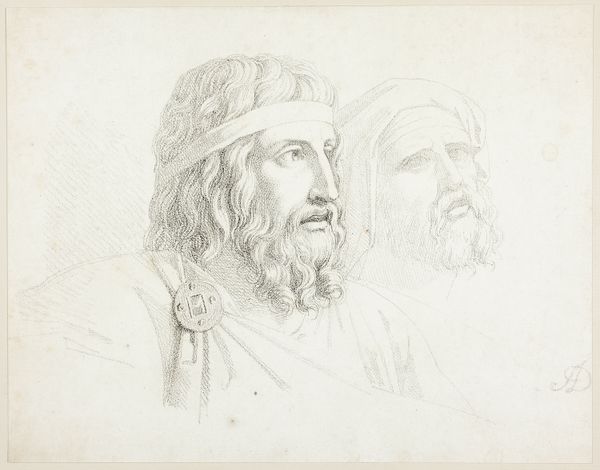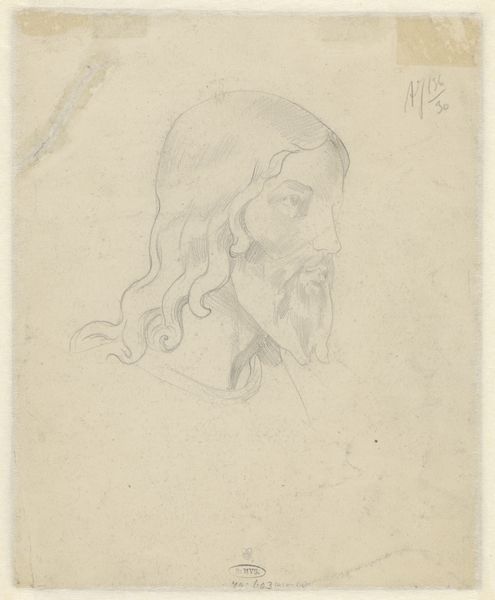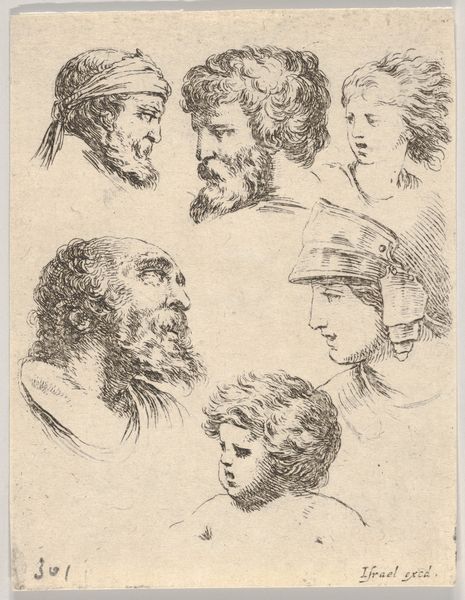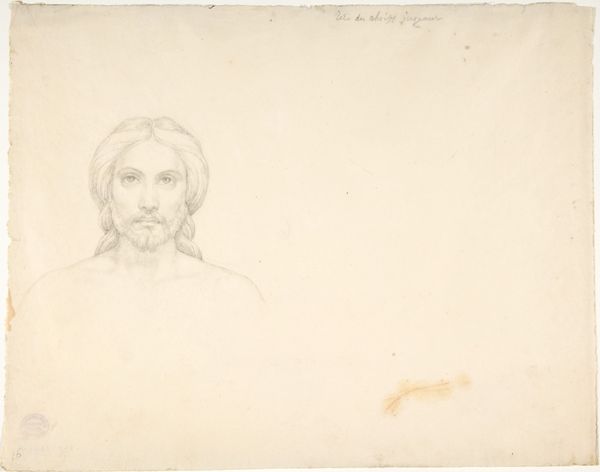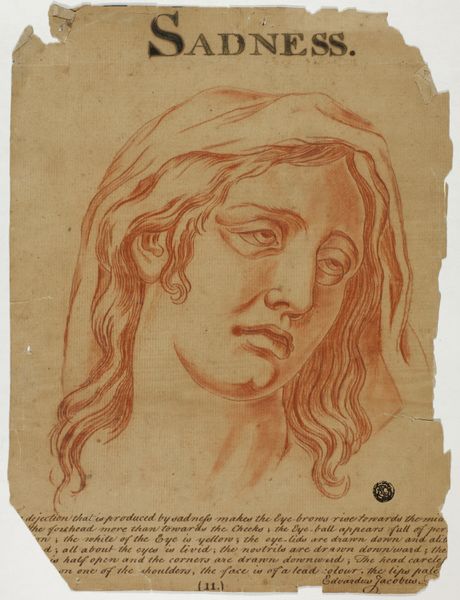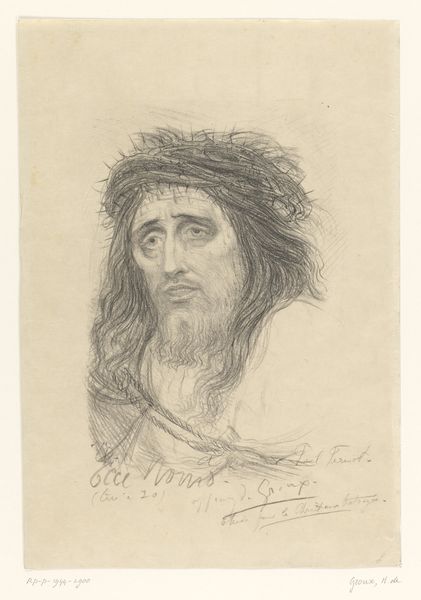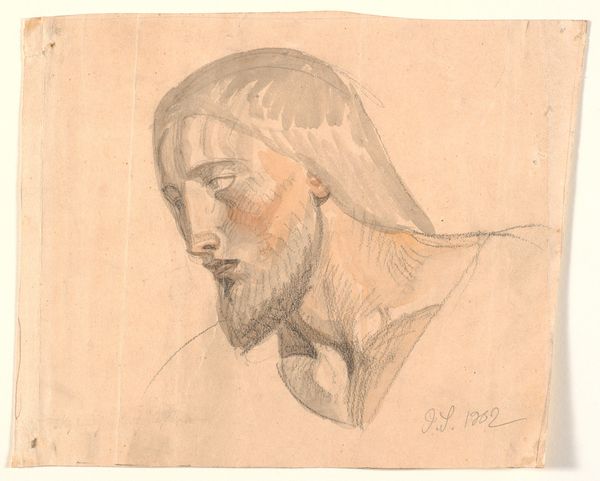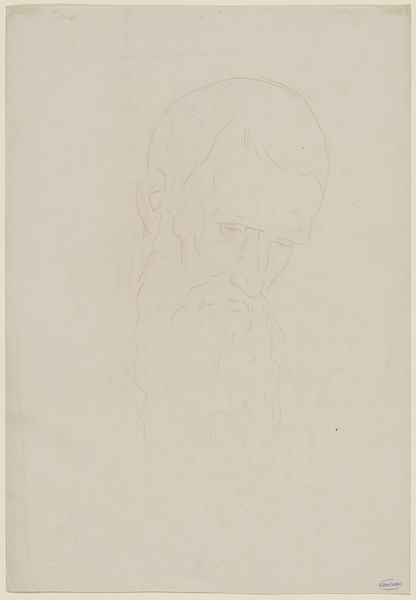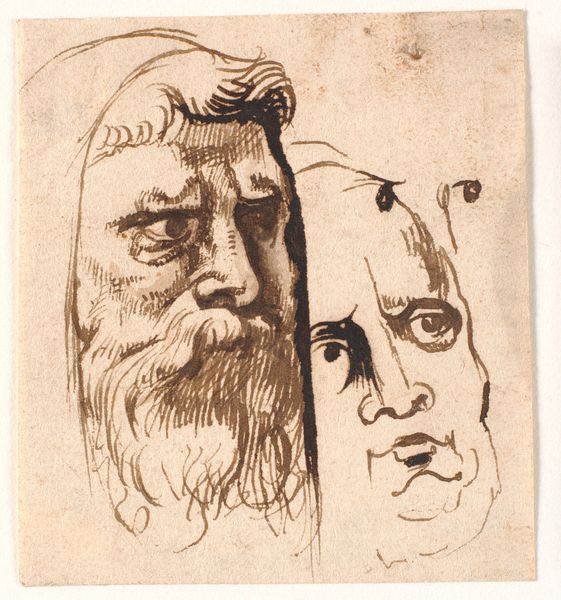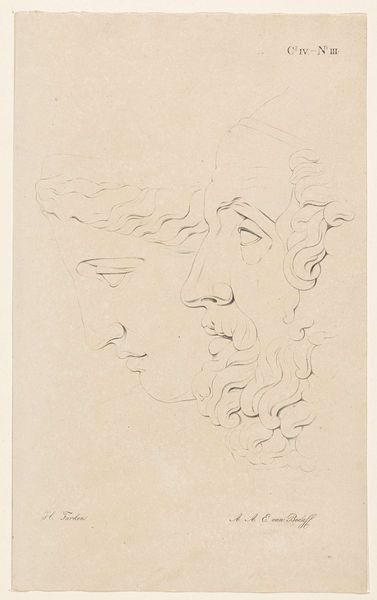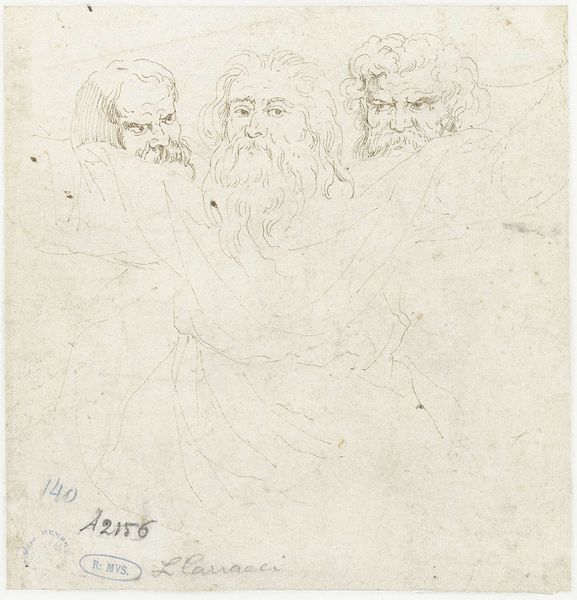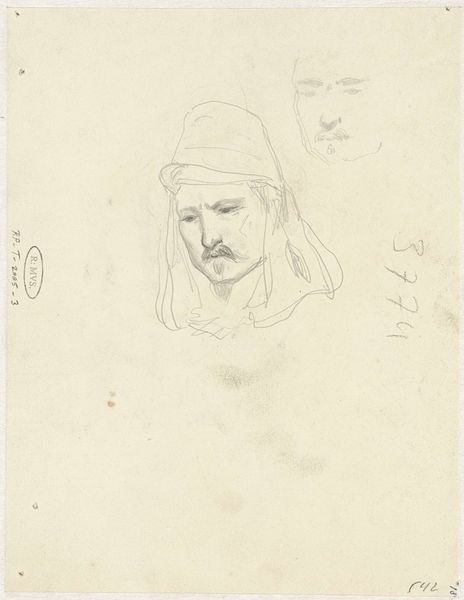
drawing, pencil
#
portrait
#
drawing
#
figuration
#
pencil
#
realism
Dimensions: 124 mm (height) x 118 mm (width) (bladmaal)
Editor: This drawing, "Tre mandshoveder," or "Three Men's Heads," was created in 1886 by Lorenz Frølich, using pencil. It's currently held at the SMK - Statens Museum for Kunst. I’m struck by the simplicity of the lines; they're so raw and almost feel like a preparatory sketch, but there's such intensity in their gaze. What do you see in this piece beyond just a drawing of heads? Curator: I see a study deeply embedded in the artistic climate of late 19th-century Europe. Think about the rise of academic art versus movements towards realism and naturalism. These faces, possibly studies for a larger work, echo the historical painting styles of the time, invoking biblical or mythological figures. But they are also rendered with a very grounded, realistic approach. How do these figures connect to the broader artistic and political conversations happening at the time? Editor: That’s interesting – the connection to broader movements. So, you’re saying this could be Frølich exploring new directions while being tied to older traditions? Is that conflict visible in the piece itself? Curator: Absolutely. The pencil medium and the sketched nature push towards an informal realism, a departure from the highly polished academic style, allowing him freedom in representing male figures. Simultaneously, by portraying men with beards and classical features, it taps into traditional tropes of male power and wisdom. What kind of power do you imagine these men held in their time? Editor: I hadn't considered it in that light, that it could be portraying power at all. Now, it's clear Frølich is not just depicting three men, but possibly representing concepts of leadership, divinity, or even idealized masculinity within a shifting societal landscape. Curator: Precisely. Art often acts as a mirror, reflecting the values and anxieties of its era, as well as contributing to reinforcing certain social codes, which in turn contribute to those values and anxieties. Understanding that helps us read deeper into a work, even a seemingly simple sketch. Editor: Thank you. I see it with completely different eyes now! It is really an interesting way of bringing context to what seems like an innocent piece.
Comments
No comments
Be the first to comment and join the conversation on the ultimate creative platform.
